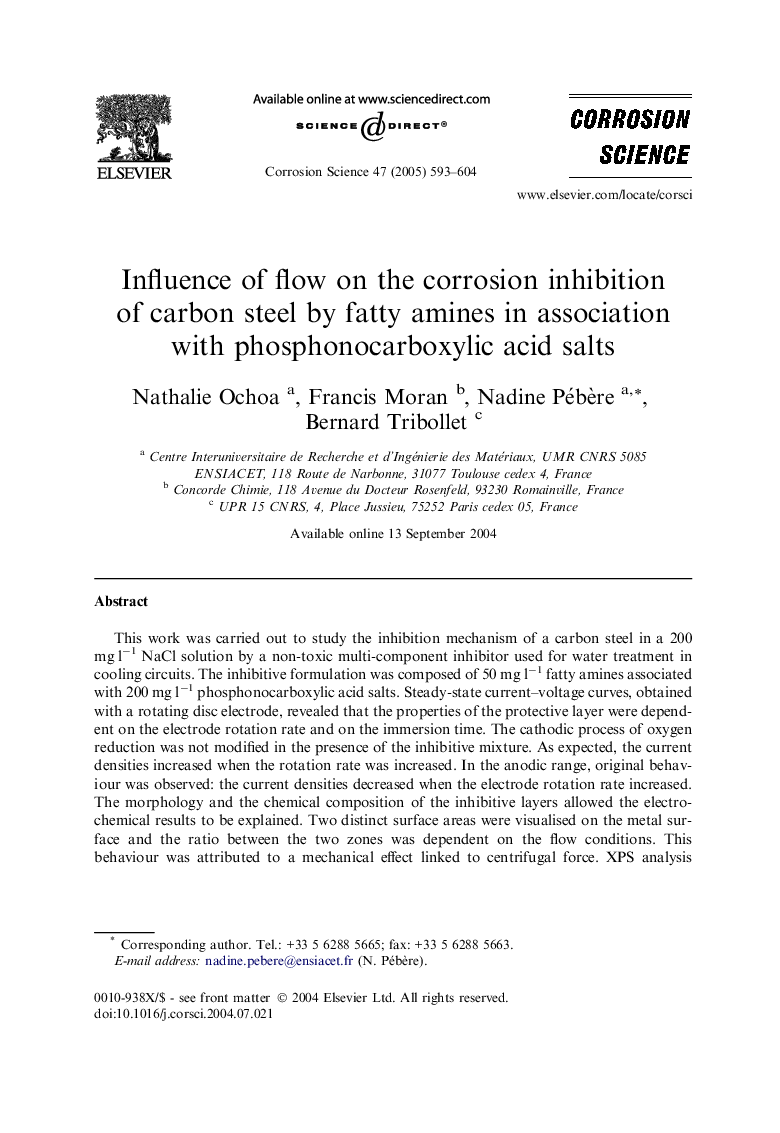| Article ID | Journal | Published Year | Pages | File Type |
|---|---|---|---|---|
| 10628528 | Corrosion Science | 2005 | 12 Pages |
Abstract
This work was carried out to study the inhibition mechanism of a carbon steel in a 200 mg lâ1 NaCl solution by a non-toxic multi-component inhibitor used for water treatment in cooling circuits. The inhibitive formulation was composed of 50 mg lâ1 fatty amines associated with 200 mg lâ1 phosphonocarboxylic acid salts. Steady-state current-voltage curves, obtained with a rotating disc electrode, revealed that the properties of the protective layer were dependent on the electrode rotation rate and on the immersion time. The cathodic process of oxygen reduction was not modified in the presence of the inhibitive mixture. As expected, the current densities increased when the rotation rate was increased. In the anodic range, original behaviour was observed: the current densities decreased when the electrode rotation rate increased. The morphology and the chemical composition of the inhibitive layers allowed the electrochemical results to be explained. Two distinct surface areas were visualised on the metal surface and the ratio between the two zones was dependent on the flow conditions. This behaviour was attributed to a mechanical effect linked to centrifugal force. XPS analysis revealed that the formation of a chelate between the phosphonocarboxylic acid salt molecules and the iron oxide/hydroxide was enhanced by the increase of the electrode rotation rate.
Related Topics
Physical Sciences and Engineering
Materials Science
Ceramics and Composites
Authors
Nathalie Ochoa, Francis Moran, Nadine Pébère, Bernard Tribollet,
